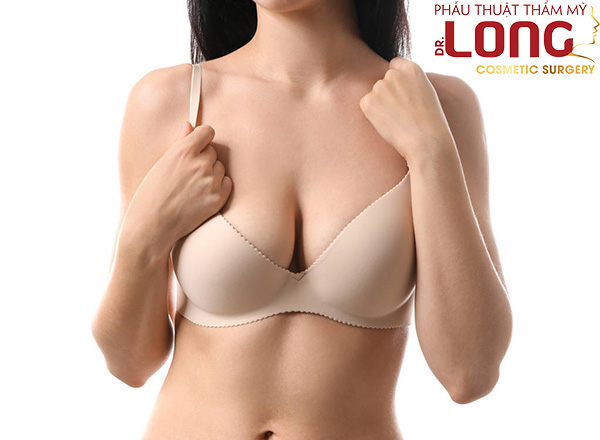Have you ever felt self-conscious seeing asymmetrical nipples? While it doesn’t affect your health, noticeable differences in nipple shape can significantly impact your emotions, aesthetics, and intimate life. The good news is that with modern plastic surgery advancements, correcting uneven nipples is no longer a distant dream. So, how is this procedure performed? Does it hurt? What’s the cost? And who is it for? All will be answered in detail below.

What are uneven nipples?
Uneven nipples refer to a condition where the two nipples differ significantly in shape, size, or position. These differences may include:
-
One nipple being larger than the other.
-
One protruding more while the other is flat or inverted.
-
Nipples positioned asymmetrically (one lower or misaligned).
This is a relatively common phenomenon that can occur at any age or gender, particularly in women after childbirth, during puberty, or those who have undergone breast surgery.
What causes uneven nipples?
Uneven or asymmetrical nipples can result from various causes:
-
Congenital: Some people are born with asymmetrical breast or nipple development.
-
Hormonal changes: Puberty, pregnancy, postpartum, or menopause can affect breast tissue development.
-
Breastfeeding habits: Regularly nursing from one side can stretch or enlarge one nipple more than the other.
-
Previous surgeries: Improper techniques during breast augmentation or reduction may result in nipple asymmetry.
-
Injury or breast tumors: Though rare, these are also potential causes and should be ruled out.
What is nipple correction surgery?
Nipple correction surgery is a cosmetic procedure aimed at adjusting the size, shape, or position of uneven nipples. Depending on the condition, the doctor may:
-
Reduce the size of one nipple to match the other.
-
Lift or lower the nipple to balance both sides.
-
Adjust the surrounding areola or soft tissue for better symmetry.
This surgery doesn’t affect milk ducts or breastfeeding functions. It typically leaves minimal scarring and allows for relatively quick recovery when performed correctly.
Who is a good candidate for nipple correction surgery?
-
Women after childbirth experiencing nipple asymmetry due to breastfeeding or hormonal changes.
-
People with congenital nipple asymmetry.
-
Patients with unsatisfactory results from previous breast surgeries.
-
Men with noticeable nipple asymmetry.
Benefits of nipple correction surgery
-
Achieve a balanced and natural-looking breast appearance.
-
Boost self-confidence when wearing clothes, lingerie, or in intimate situations.
-
Preserve lactation ability and sensitivity with proper surgical techniques.
-
Fast recovery, minimal pain, and barely visible scars.
-
Correct severely inverted or misaligned nipples.
-
Suitable for a wide range of patients, including postpartum and previously operated individuals.
Common surgical techniques for uneven nipples
Depending on each case, your surgeon may recommend one of the following:
-
Nipple reduction
Ideal for long, large, or oversized nipples. The surgeon removes excess tissue and reshapes the nipple for a more symmetrical appearance. -
Correction of inverted nipples
Used when the nipple is pulled inward, either due to congenital reasons or after breastfeeding. The procedure releases tethered tissue to allow the nipple to protrude while preserving milk ducts when necessary. -
Nipple reconstruction
For patients who have lost one or both nipples due to tumor removal or accidents. Skin from surrounding areas is used to create a new nipple. -
Nipple repositioning
To align nipples on the same horizontal axis and achieve symmetry with the overall breast contour.
Surgical process of nipple correction
The procedure typically lasts 30–60 minutes and includes the following steps:
-
Consultation and examination: Assess nipple condition, determine cause, and choose the best surgical approach.
-
Marking and local anesthesia: The doctor marks the surgical area and applies anesthesia so the procedure is painless.
-
Performing the surgery: Small incisions are made to adjust the nipple tissue with minimal invasiveness.
-
Cosmetic suturing and post-op care guidance: Specialized sutures are used to reduce scarring, and patients receive thorough aftercare instructions.
Post-operative care for faster recovery
-
Keep the area clean and dry, avoid heavy pressure during the first 7 days.
-
Avoid tight bras.
-
Follow medication and ointment prescriptions as directed.
-
Attend follow-up appointments as scheduled.
-
Avoid alcohol, smoking, and stimulants for at least 2 weeks post-surgery.
Frequently asked questions about nipple correction surgery
-
Does nipple correction surgery hurt?
The area is numbed with local anesthesia or mild sedation, so you won’t feel pain during the procedure. Mild soreness may occur for a few days but typically subsides quickly. -
Will it affect breastfeeding?
When performed by a skilled specialist using proper techniques, the procedure won’t impact milk ducts or future breastfeeding. -
How long is recovery?
Swelling usually subsides within 1–2 weeks. You can return to regular activities after 7–10 days, but avoid intense physical activity for 3–4 weeks. -
Will there be scars?
The incisions are very small and placed in less noticeable areas. Scars will fade over time, especially with proper care and use of scar treatments if needed.
Nipple correction is a safe and effective solution to restore balance and confidence. With modern techniques and skilled professionals, the procedure offers long-lasting results, low risks, and preserves natural breast function. Don’t hesitate to seek advice from a reputable clinic for the best care and support—because your body deserves to feel right for you.
Dr. Long Aesthetic Surgery Clinic
Address: 318 Le Hong Phong St, Ward 1, District 10, Ho Chi Minh City
Hotline: 0908 493 008
Website: http://bacsilong.com














